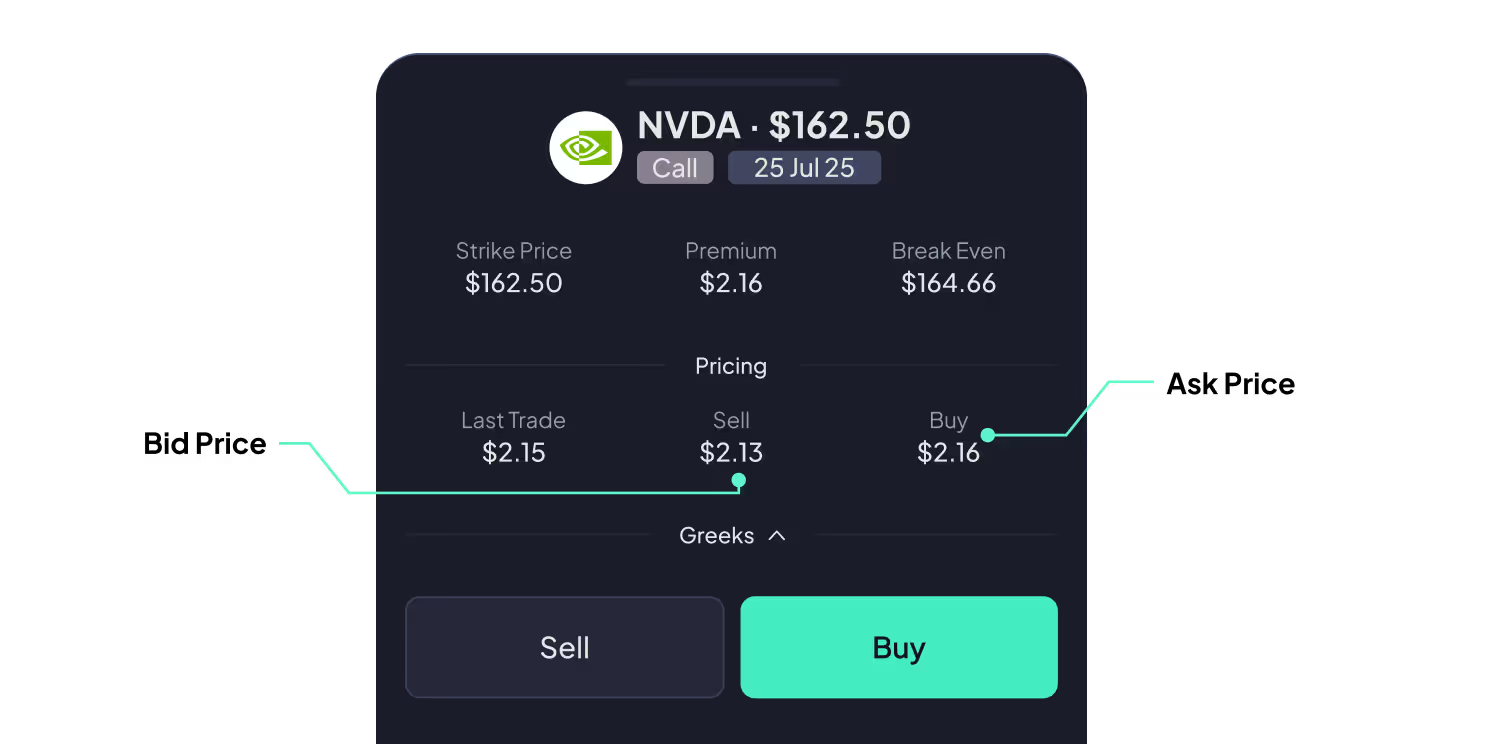Bid Price

The bid price is the amount a buyer is willing to pay for a security, like a share, bond, or option. It sits on the other side of the ask price, which is the lowest amount a seller is willing to accept. Together, they form the bid-ask spread - a key part of how prices are set in live financial markets.
Bid prices are continuously updated based on supply, demand, and trading activity. When you’re selling a security, the bid price is typically the indicative amount you might receive if you executed a sale at that moment, subject to market conditions and any associated costs. The difference between the bid and ask prices can indicate how liquid or actively traded a security is. Smaller spreads often suggest high liquidity, while wider spreads can suggest lower trading volume or greater uncertainty in pricing.
Why the bid price matters to investors
Understanding the bid price can help investors:
- Understand the approximate amount they may receive if selling a security
- Assess liquidity, particularly when compared to the ask price
- Evaluate the spread, which can influence trading costs or timing
For active traders, even small differences in the bid price may influence trading decisions, particularly in volatile markets or when managing larger positions.

